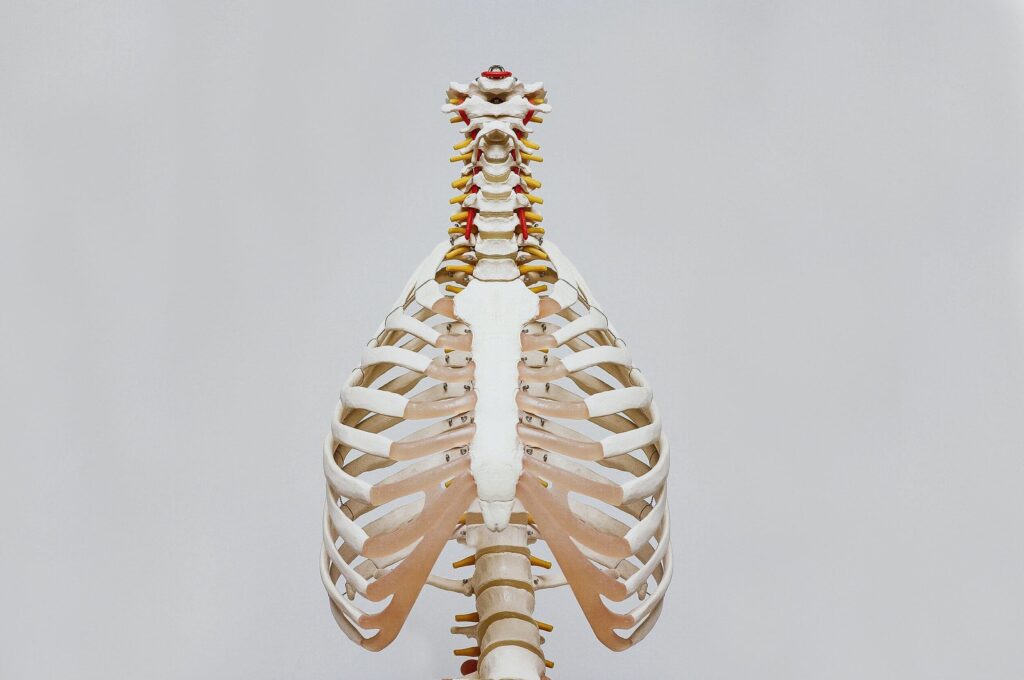The lungs are a part of our respiratory system which enables us to breathe. Oxygen is inhaled and carbon dioxide is exhaled during the process of respiration.
A lung function test or Pulmonary function testing is an evaluation done to check the respiratory health of an individual. One of the most basic tests is Spirometry. The test basically measures the amount of air that our lungs can hold and how forcefully we can empty the air from the lungs. This test acts as a screening tool for various respiratory diseases such as asthma, chronic obstructive pulmonary disease (COPD), and other conditions that affect respiration. Spirometry is also used to monitor the lung condition and measure the progress of any treatment if given.
Lung function can be influenced by many factors, and the condition known as metabolic syndrome is talked about a lot in recent times.
Metabolic syndrome as we know is a complex condition featuring high blood glucose, hypertension, abdominal obesity and dyslipidemia. Several studies conducted suggest that each component of the metabolic syndrome has a different effect on pulmonary function across racial groups.
Abdominal obesity is one of the leading causes of lung function abnormalities as there is an accumulation of fat in the abdominal region and the mediastinum which results in altering lung function.
Lastly, most recent studies have shown that subjects who are metabolically unhealthy are more prone to decreased lung function than their metabolically healthy counterparts.
Introduction
Lung function has a huge impact on our overall health and day-to-day lives, whether we’re climbing a flight of stairs, doing a workout or considering our metabolic health.
The lungs help oxygen to enter the bloodstream, which circulates it to the rest of the body. The lungs then help the body get rid of the waste gases in the form of CO2 when we breathe out. (1)
The health of our lungs is essential to our daily well-being and has a direct link to metabolic health. In this article, we will explore the respiratory system and how metabolic health and lung function interact.
The Respiratory System
The respiratory system is the network of organs and tissues that help you breathe. It includes the airways, the lungs and blood vessels that all work together to take oxygen from the air, move it throughout the body and clean out waste gases like carbon dioxide.
The air we breathe enters our body from the nose and the mouth. It then flows through the throat (pharynx) and the voice box (larynx) and enters the windpipe (trachea). The trachea then divides into two hollow tubes called the right bronchus, which supplies air to the right lung, and the left bronchus, which supplies air to the left lung. Next, these bronchi (plural for bronchus) divide into smaller bronchi, which further subdivide into smaller hollow tubes called bronchioles.
Bronchioles are the smallest air tubes in the lungs, and the medical term for all the air tubes running from the nose and mouth to the bronchioles is “respiratory tract”. In addition, there are tiny air sacs at the end of the bronchioles called the alveoli, where the oxygen enters the blood and the CO2 leaves the blood.
Functions of the lungs
The primary function of the lungs is to allow oxygen to reach the red blood cells so they can be carried around the body to the cells that need it. The lungs also help the body remove CO2 when we breathe out.
The other functions of the lungs include changing the pH of the blood by increasing or decreasing the amount of CO2 in the body, filtering out small gas bubbles that may form in the bloodstream and converting a chemical in the blood called angiotensin I into angiotensin II to enable the regulation of blood pressure.
Working of the Lungs and Breathing
During inhalation, the diaphragm—a dome-shaped muscle found beneath the lungs—gets tighter (contracts), flattens as air moves into the lungs and increases in size.
Exhalation is the opposite of inhalation, where the diaphragm and other chest muscles relax, making the lungs decrease in size as they push air out of the lungs.
During this process, some oxygen from the air inhaled is transferred into the bloodstream, and some of the carbon dioxide from the blood is transferred to this air in the lungs. This process helps maintain the level of oxygen and carbon dioxide in the bloodstream.
The brainstem is the part of the brain that controls the breathing pattern. The nerve impulses from the brainstem mechanically control the contractions of the diaphragm and the other breathing muscles. But sometimes, when we can consciously change our pattern of breathing or hold our breath, other parts of the brain temporarily overrule the brainstem.
During this process, information regarding the levels of CO2 in the body is sent by sensors, in the form of nerve impulses, to the brain. The brain accordingly controls the rate and depth of breathing to maintain the CO2 levels in the bloodstream. (2a)
Lung Function and Metabolism
Respiration is the process of adding oxygen and removing carbon dioxide from the bloodstream by way of inhalation and exhalation through the lungs.
Metabolism is in every cell in the body. It is a series of chemical processes in each cell transforming the calories we eat into fuel to keep us alive. These processes sustain life, everyday functioning and include breaking down food and drink to energy and building or repairing our bodies.
The lung performs various metabolic functions like a gas exchange, conversion of angiotensin I to angiotensin II and protein synthesis.
When exploring lung function, previous studies shed light on the connection between body weight, body mass index (BMI) or body-fat percentage and lung function. However, a recent study looked into the connection between the basal metabolic rate, which is the amount of energy your body needs for necessary bodily functions, and lung function. The study specifically focused on elderly men and postmenopausal women and the results showed a strong correlation between declining metabolic rate and reduced lung function.
Lung Function and Metabolic Health
Metabolic health is defined as having ideal blood sugar levels, triglycerides, high-density lipoprotein (HDL) cholesterol, blood pressure and waist circumference without using any kind of medications. These factors relate directly to a person’s chances of heart disease, diabetes and stroke.
A study suggests that metabolically unhealthy individuals were more prone to decreased lung function as compared to their metabolically healthy counterparts, regardless of the obesity status of these individuals. (3) This finding further suggests that lung-function impairment is more associated with metabolic health than obesity.
So far, obesity has been observed as the leading cause of various metabolic diseases, leading to an increase in the risk of cardiovascular diseases.
Recently, for research purposes, subgroups of obesity, known as “metabolically healthy obesity (MHO)”, which have a good metabolic profile, have gained a lot of interest. Data showed that MHO group individuals had better lung function compared to their metabolically unhealthy counterparts. The reasons for this were that the MHO group individuals had fewer components of metabolic syndrome that are independently associated with lung-function impairment. In addition, diseases such as diabetes and hypertension that are associated with a decrease in lung function were significantly lower in the MHO group. However, research also suggests that people with metabolically healthy obesity have a higher risk of developing metabolic abnormalities than people who do not have obesity.
It is essential to consider both obesity and metabolic health and their interactions to estimate the risk of lung-function impairment.
Impaired Lung Function and Metabolic Syndrome
Lung-function impairment is assessed by a reduction in the forced expiratory volume in the first second of exhalation (FEV1) and forced vital capacity (FVC). (4) It contributes to several major health issues. FEV1 and FVC are lung-function tests that are measured during spirometry.
The spirometry test, also known as a pulmonary function test, is meant to measure your lung function and involves forcefully breathing out into a mouthpiece connected to a spirometer machine. This test acts as a screening tool for various respiratory diseases such as asthma, chronic obstructive pulmonary disease (COPD) and other conditions that affect respiration. Spirometry is also used to monitor the lung condition and measure the progress of any treatment given.
Metabolic syndrome refers to a group of conditions that occur simultaneously elevating your risk of heart disease, stroke and type 2 diabetes. The conditions mentioned include increased blood pressure, high blood sugar, excess body fat around the waist and abnormal cholesterol or triglyceride levels.
Lung-function impairment and metabolic syndrome have been associated with an increased risk of cardiovascular disease. There has been a link observed between metabolic syndrome and lung diseases in several cross-functional and longitudinal studies. (5)
Metabolic syndrome has been identified as an independent risk factor for greater lung-function impairment, pulmonary hypertension, asthma and worsening respiratory symptoms. The combination of obesity and metabolic syndrome seems to impair lung function to a great extent, but it is still quite unclear how much of the metabolic syndrome-related lung effects occur independently of obesity and vice versa. (5a)
Dietary factors and the effect of adiposity and fat-infused inflammation on the lungs are the other factors that coexist along with metabolic syndrome.
Abdominal Obesity and Lung-Function Abnormalities
Research suggests that abdominal obesity is one of the leading causes of lung-function abnormalities (5b). The reason is the accumulation of fat in the abdominal and central region of the body and the mediastinum, which results in altering lung function.
Abdominal obesity, also known as central obesity, is a condition where excess abdominal fat or weight is developed around the centre of the body and is also called visceral fat. Abdominal obesity is a chronic condition that can contribute to impairments in lung function, which can lead to an increase in risks for respiratory-related diseases.
As per research in internal medicine, (6) there was a significant relationship found between lung-function impairment and metabolic syndrome—primarily through abdominal obesity and partially through hyperglycemia.
As per research by the European Respiratory Journal, the association between BMI and lung function is dependent on the presence of abdominal obesity. (7) Studies claim that abdominal or central-obesity markers like waist circumference (WC), waist-hip ratio and abdominal height are important predictors of pulmonary function. (8)
In the large-scale population-based study, there is a positive relationship between lung function impairment and metabolic syndrome mainly because of abdominal obesity and independent cardiovascular risk factors like BMI.
Obesity and Lung Function
Obesity is a chronic disease that arises through the excessive accumulation of fat in the body, and respiratory disorders are among the comorbidities associated with obesity.
According to World Health Organization reports, the number of obese individuals has tripled since 1975. Obesity has reached epidemic proportions and affects people of all ages and social classes worldwide.
Excess body weight promotes metabolic and structural changes in these obese individuals, making them more susceptible to cardiovascular, pulmonary-renal and biliary (related to the liver) diseases, metabolic alterations, obstructive sleep apnea (OSA) and some types of neoplasms (abnormal growth of cells/tumours).
Obesity can determine alterations in the respiratory function even when the lungs are normal due to the increase in respiratory effort, compromising the gas-transport system by affecting the thorax and the diaphragm.
Structural changes in the thoracic–abdominal region in obese individuals lead to limited diaphragm mobility and rib movement. Both functions are essential for appropriate ventilatory mechanics.
The adipose tissue is an endocrine and paracrine organ that produces an array of hormones (adipokines) that signal key organs to maintain metabolic homeostasis, and their impairments are linked to metabolic diseases. Obesity induces the production of inflammatory cytokines that lead to a pro-inflammatory state associated with atopy, bronchial responsiveness and increased risk of asthma. (9)
A review (10) was performed by selecting publications in various scientific databases. The results demonstrated that compared to healthy individuals, obese individuals are presented with a reduction in lung volume and capacity.
The other findings of the review suggested a reduction of total lung capacity, including a reduction in forced expiratory volume after one second in obese individuals compared to healthy individuals. The articles analysed, proved and concluded the presence of restrictive respiratory patterns with obesity. (10)
Conclusion
Lung function helps the body absorb oxygen into the bloodstream and release carbon dioxide from the body. It provides support to the process of metabolism in the body to create energy. The proper functioning of the lungs is important for the well-being of an individual. The metabolic health of an individual has a direct effect on lung function. Metabolically unhealthy individuals are more prone to decreased lung function.
Metabolic syndrome has been observed as a factor increasing the risk of lung impairment. Various markers of abdominal obesity help predict pulmonary function, and there has been a positive relationship between abdominal obesity and impaired lung function. Finally, obesity has been associated with respiratory disorders leading to lung-function abnormalities. Addressing obesity, a marker of metabolic health can help to improve lung function. The lung must function well for the body to remain healthy and operate optimally.
Disclaimer:The contents of this article are for general information and educational purposes only. It neither provides any medical advice nor intends to substitute professional medical opinion on the treatment, diagnosis, prevention or alleviation of any disease, disorder or disability. Always consult with your doctor or qualified healthcare professional about your health condition and/or concerns and before undertaking a new healthcare regimen including making any dietary or lifestyle changes.
References








